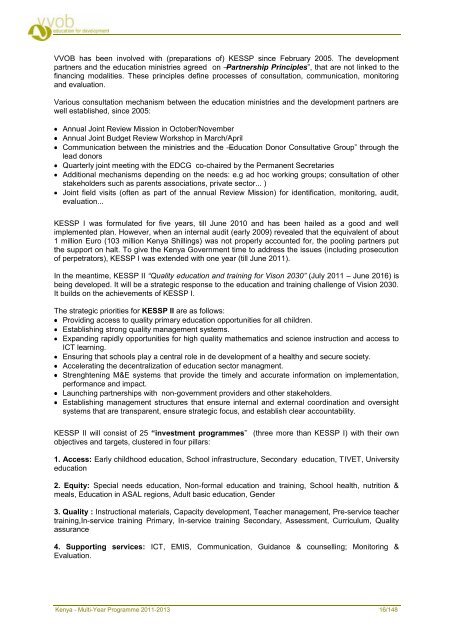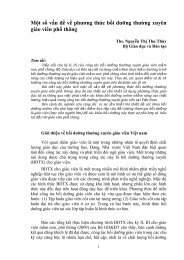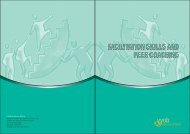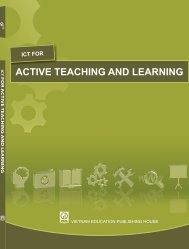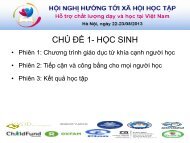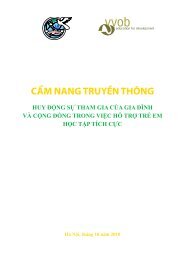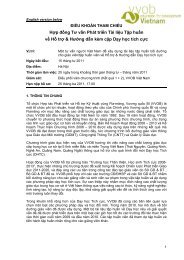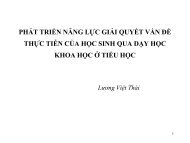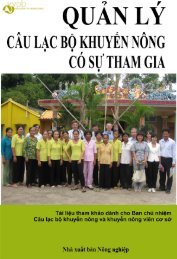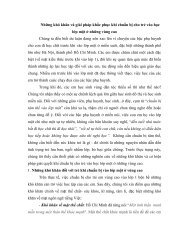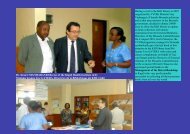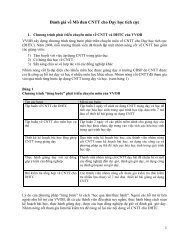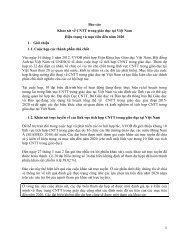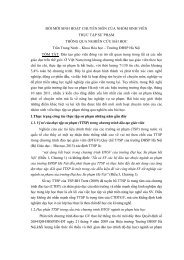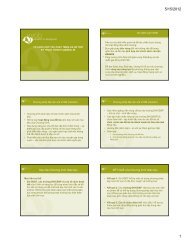Kenya Multi-Year Programme 2011-2013 - VVOB
Kenya Multi-Year Programme 2011-2013 - VVOB
Kenya Multi-Year Programme 2011-2013 - VVOB
- No tags were found...
You also want an ePaper? Increase the reach of your titles
YUMPU automatically turns print PDFs into web optimized ePapers that Google loves.
<strong>VVOB</strong> has been involved with (preparations of) KESSP since February 2005. The developmentpartners and the education ministries agreed on ―Partnership Principles‖, that are not linked to thefinancing modalities. These principles define processes of consultation, communication, monitoringand evaluation.Various consultation mechanism between the education ministries and the development partners arewell established, since 2005:Annual Joint Review Mission in October/NovemberAnnual Joint Budget Review Workshop in March/AprilCommunication between the ministries and the ―Education Donor Consultative Group‖ through thelead donorsQuarterly joint meeting with the EDCG co-chaired by the Permanent SecretariesAdditional mechanisms depending on the needs: e.g ad hoc working groups; consultation of otherstakeholders such as parents associations, private sector... )Joint field visits (often as part of the annual Review Mission) for identification, monitoring, audit,evaluation...KESSP I was formulated for five years, till June 2010 and has been hailed as a good and wellimplemented plan. However, when an internal audit (early 2009) revealed that the equivalent of about1 million Euro (103 million <strong>Kenya</strong> Shillings) was not properly accounted for, the pooling partners putthe support on halt. To give the <strong>Kenya</strong> Government time to address the issues (including prosecutionof perpetrators), KESSP I was extended with one year (till June <strong>2011</strong>).In the meantime, KESSP II “Quality education and training for Vison 2030” (July <strong>2011</strong> – June 2016) isbeing developed. It will be a strategic response to the education and training challenge of Vision 2030.It builds on the achievements of KESSP I.The strategic priorities for KESSP II are as follows:Providing access to quality primary education opportunities for all children.Establishing strong quality management systems.Expanding rapidly opportunities for high quality mathematics and science instruction and access toICT learning.Ensuring that schools play a central role in de development of a healthy and secure society.Accelerating the decentralization of education sector managment.Strenghtening M&E systems that provide the timely and accurate information on implementation,performance and impact.Launching partnerships with non-government providers and other stakeholders.Establishing management structures that ensure internal and external coordination and oversightsystems that are transparent, ensure strategic focus, and establish clear accountability.KESSP II will consist of 25 “investment programmes‖ (three more than KESSP I) with their ownobjectives and targets, clustered in four pillars:1. Access: Early childhood education, School infrastructure, Secondary education, TIVET, Universityeducation2. Equity: Special needs education, Non-formal education and training, School health, nutrition &meals, Education in ASAL regions, Adult basic education, Gender3. Quality : Instructional materials, Capacity development, Teacher management, Pre-service teachertraining,In-service training Primary, In-service training Secondary, Assessment, Curriculum, Qualityassurance4. Supporting services: ICT, EMIS, Communication, Guidance & counselling; Monitoring &Evaluation.<strong>Kenya</strong> - <strong>Multi</strong>-<strong>Year</strong> <strong>Programme</strong> <strong>2011</strong>-<strong>2013</strong> 16/148


